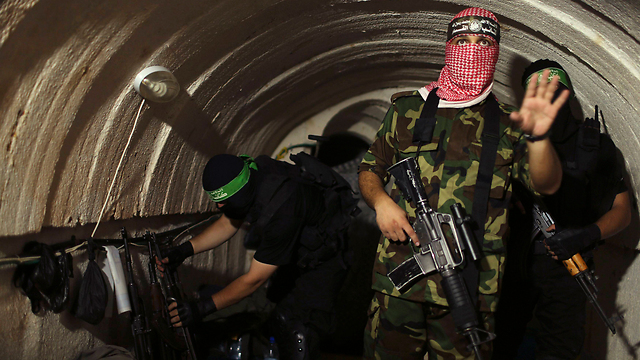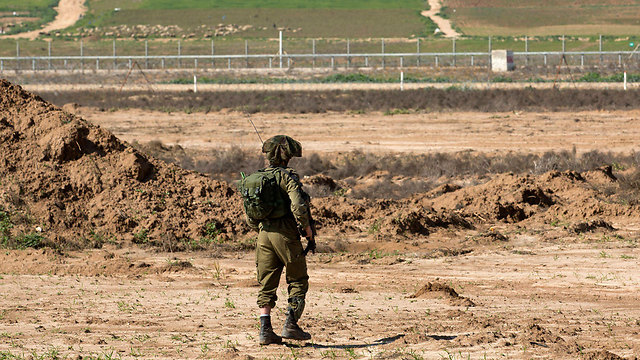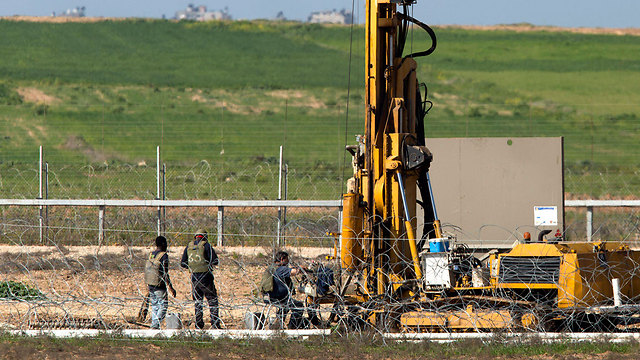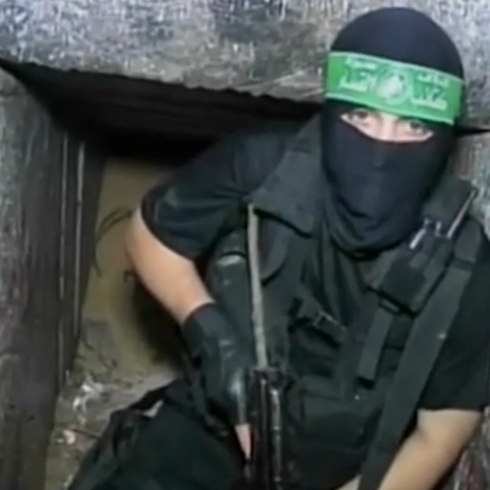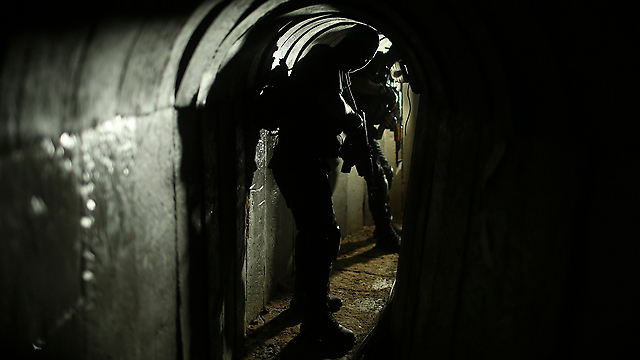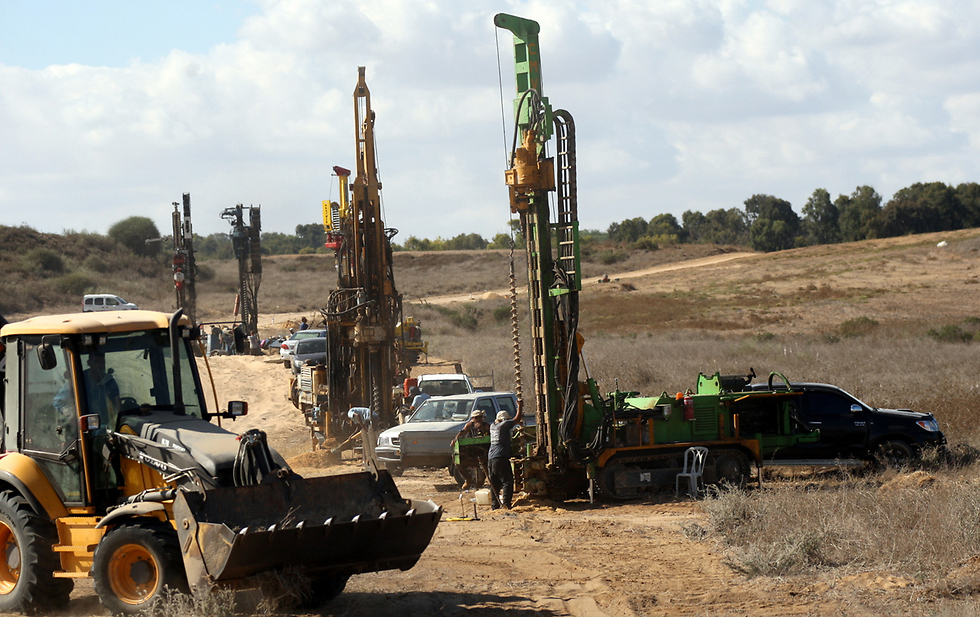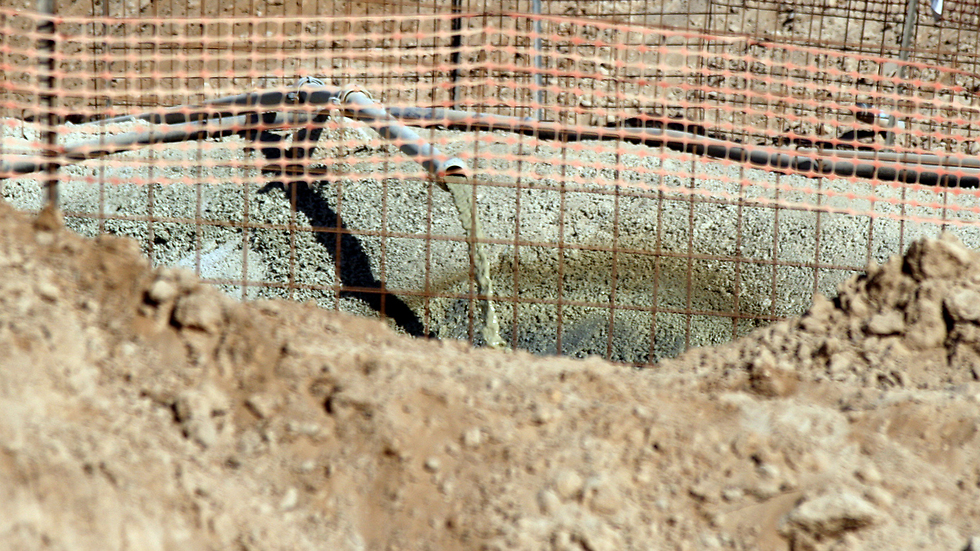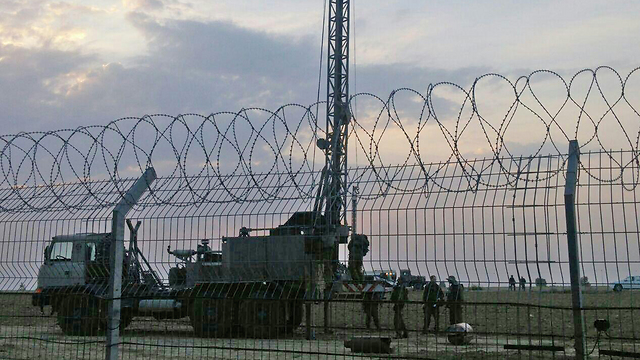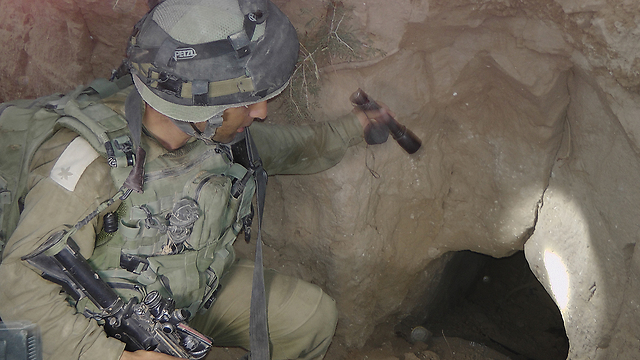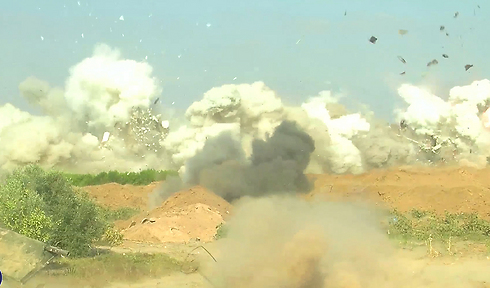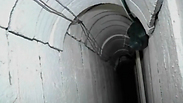
Comptroller: Defense establishment neglected tunnel handling
The Shin Bet and Military Intelligence failed to cooperate on tunnels; 'significant gaps in intelligence' left troops on the ground no choice but to improvise; plans to combat the threat remained on paper, while the Defense Ministry cut down on budget to protect Gaza border communities.
Even though the defense establishment knew that terror organizations in Gaza were digging tunnels into Israel, the State Comptroller report released Tuesday pointed to many failings, both in intelligence and in the way security forces dealt with the threat in practice.
The comptroller, retired judge Yosef Shapira, noted that the defense establishment's handling of the developing tunnel threat both in Gaza and in Lebanon was lacking, slow, and failed to neutralize the threat.
The findings of his investigation, which are also based on investigations carried out by the IDF and more specifically the Military Intelligence Directorate (MID), show that even though the Gaza tunnel threat continuously increased between the years 2008 and 2013, the MID did not include the threat in the national EEI (Essential Elements of Information—a form of intelligence triage) until 2015.
Between 2008 and 2013, Shapira wrote, the MID did invest great efforts in collecting intelligence on the tunnels, including attempts to locate the tunnels by trying to identify certain features using different measures, but the effort was not sufficiently comprehensive.
The MID significantly increased its efforts against the tunnels only in late 2013, after three offensive border-crossing tunnels were found inside Israel within a year. But this was too little too late, as work on the tunnels began many years prior to that. This led to only partial intelligence success.
Furthermore, between 2012 and the beginning of Operation Protective Edge in the summer of 2014, the intelligence gathering effort against the defensive tunnels inside the strip was insufficient as a whole, which led to significant gaps in intelligence to the detriment of the forces operating on the ground.
The comptroller also pointed to the lack of cooperation between the Shin Bet and the MID on the matter.
While the Shin Bet did invest great intelligence efforts targeting the offensive tunnels, it only increased these efforts and started operating in a full coordinated manner in 2013.
And despite the fact the Shin Bet had information regarding the extent and severity of the threat long before, the Shin Bet's Southern District head did not put an emphasis on the issue until 2014.
"In addition, the Shin Bet did not work to discuss the full extent of the threat as part of the national EEI until 2015," the comptroller noted.
There were "significant intelligence gaps" in the information on the tunnels that the MID and Shin Bet relayed to the forces in the field, particularly with regards to Hamas's defensive tunnels inside Gaza.
"The lack of said information made it difficult for the maneuvering forces to achieve one of the main objectives of Operation Protective Edge—destroying and neutralizing all of the offensive tunnels—and prolonged the time it took them to do so."
Plans remain on paper
The political echelon was also criticized in this regard. The comptroller noted that it is the job of the political leadership—the prime minister and defense minister—and of the IDF chief to instruct, supervise and monitor the formulation of the national EEI."The situation described in this report, when on the one hand a strategic threat is developing... while on the other hand this threat is not included in the national EEI... is a faulty process, which requires in-depth self-examination by all involved parties concerning the way the national EEI significantly affects intelligence efforts with regards to the different threats," the comptroller wrote.
While plans were formulated on the matter, most of them remained on paper. The comptroller noted that the IDF's Planning Directorate published a plan to combat the tunnels as early as 2008. In practice, despite the importance of this plan and the threat the tunnels posed, the relevant branches and commands either hardly promoted the plan or not at all. The Planning Directorate, meanwhile, did not follow up on the plan's implementation, leaving it "useless," according to the comptroller. Therefore, the Planning Directorate's plan did not achieve its objective and did not help promote the inter-branch work against the tunnels.
The comptroller noted that the fact the top IDF command did not have an operational policy concerning the tunnels—a threat define as strategic many times since 2008 by many top officials in both the military and the political leadership, including the prime minister, the defense minister and the IDF chief—was a fundamental, continuous failing that undermined the ability to make the issue a priority among the relevant branches and forces.
The MID, the comptroller wrote, did not supervise the Southern Command's intelligence gathering efforts on Hamas's defensive tunnels.
Furthermore, while the head of the MID's Research Division determined in 2013 that the tunnel threat is "a significant intelligence challenge," which suffers from "relative 'blindness' by the IDF's top echelons" and that "the potential long-term damage obligates the Research Division to deal with the issue more seriously," the MID did not address the issue. The Research Division continued relying on the research done by the Gaza Division and the Southern Command.
Air Force without equipment
In the report's conclusion, the comptroller notes that despite the fact the defense establishment has been dealing with the tunnel threat since Operation Cast Lead in 2008; despite the knowledge and experience accumulated vis-à-vis the border-crossing offensive tunnels and the defensive tunnels inside Gaza; and despite the high probability of another round of fighting inside the strip, there was no plan on how the fighting forces should deal with these tunnels.The IDF's different branches did not have a defined policy on how to deal with the tunnels. Neither the Southern Command nor the Operations Directorate prepare operational plans to that end. Moreover, the Ground Forces suffered from a shortage in equipment and training. The Air Force, meanwhile, only had a limited ability to confront the threat, as it lacked know-how, intelligence, suitable operational plans, capabilities and relevant abilities.
This shortcoming was evident in the fact engineering forces had to improvise while confronting the tunnels. Before July 2014—when the fighting was already underway—"when the engineering forces were required to destroy offensive tunnels like the ones in the Gaza Strip, they did so while formulating an ad-hoc technique to that end, or by using old techniques developed for the smuggling tunnels of the Philadelphi Route in 2006. These techniques were unsuitable for the offensive needs in Operation Protective Edge."
The threat remains
The comptroller also found shortcomings in efforts to combat the tunnels using technological measures. From early 2000 to 2010, the defense establishment's research and development (R&D) bodies only dealt with the threat in a limited capacity, without accumulating sufficient knowledge, building test sites, developing relevant simulation abilities and more. The emphasis was put mostly on detecting and locating the tunnels using one central system.
After this system failed, the comptroller added, from 2010 to Operation Protective Edge, the IDF and Defense Ministry's R&D bodies began developing a more extensive and in-depth solution to the threat, but not at a pace that matched the development of the threat and operational needs. The work also paid little mind, if at all, to central issues, such as mapping the tunnels, destroying them, and the tactical measures the forces needed to that end.
Fence construction halted
The comptroller also examined the budget allocated for the protection of the Gaza border communities. "In the years before Operation Protective Edge, the Defense Ministry wore the security budget significantly thin, while the budget for bolstering security measures was worn down to zero in the years 2013 and 2014," Shapira wrote. "This was done despite the fact the need to bolster security and maintain the existing measures—both in the Gaza border communities and in others—only increased with time."The comptroller pointed to a series of moves that "undermined (the residents') the sense of security"—pulling out the soldiers who were protecting the communities; removing IDF outposts from within the communities; stopping funding of training for civilian security teams as part of their reserve duty; changing the salary definition for some of the communities' heads of security; and providing insufficient training to heads of security and security teams.
After the operation, and following the attacks from the tunnels, more funds were allocated, but those were only partially transferred while plans were not completed.
"The investigation found that in November 2014, the Gaza border communities were short some NIS 100-120 million shekels needed to bring them to a 'reasonable level' when facing the threat. This issue came up often during meetings the State Comptroller's representatives held with the heads of the regional councils in the area in November 2014. The local leaders stated that this conduct by the Defense Ministry has at the time led to halting construction on new fences for several of the communities, and further hurt the residents' sense of security, hurting their trust in the defense system."
Defense Ministry: Every technological angle examined
The Defense Ministry provided the following response, "Throughout the years, the Defense Ministry's Administration for the Development of Weapons and Technological Infrastructure has led, developed and introduced into use technological capabilities that provided and still provide a significant answer to all levels of the effort against the underground challenges. This kind of answer has not been developed by any country in the world.
"The weaponry and technological measures—which are being used by IDF forces now to deal with the underground challenge—are the result of the R&D effort at the administration. These achievements are the result of investment over many years, during which groundbreaking technological infrastructure was developed.
"The administration significantly prioritized the issue—compared to other R&D issues—both in manpower and in budget. In this framework, many research projects were launched, academic research facilities were formed, and infrastructure was built for testing—all in an effort to promote R&D as fast as possible and create practical technological capabilities to deal with the tunnel threat. As part of the administration and ministry's policy to examine any relevant technological angle against the tunnel threat, the administration examined hundreds of proposals from Israel and abroad.
"The extent of resources and R&D achievements were presented to the state comptroller, who saw fit to note his appreciation and note that 'the State Comptroller's Office is aware of the great effort and hard work done by the different R&D teams and the operational bodies in combating the tunnel threat with technological solutions.'"
The IDF provided the following response, "The IDF received the comptroller report, is studying it and will learn the necessary lessons. The MID has made extensive and systematic efforts to gather intelligence as well as invested great resources in dealing with the tunnel threat, even before the campaign. Evidence to that is the intelligence the MID provided about the offensive tunnels, which allowed the fighting forces to locate most of the tunnels and expose their route.
"With regards to strengthening the military, the IDF invested great efforts in training and technology to equip the forces in the best measures there is. It is important to emphasize that there is no technological solution that hasn't been examined by the IDF as part of work on dealing with the tunnel threat.
"The IDF continuously has new situation assessments, based on which resources and efforts are invested, while looking at the general picture of threats and managing risks wisely. It is important to emphasize that the underground issue is being handled in an extensive and thorough manner, and the IDF is already implementing, in practice, most of the notes in the report. This is part of a regular work plan and an ongoing process of taking unprecedented steps to deal with the tunnel threat.
"Among other things, great efforts and many resources were invested in development of technological systems and equipping them in accordance with their stage in development. This is done by training the fighting forces on how to deal with the threat, defining the threat and possible scenarios, and formulating an overarching policy on the matter.
"The report chose to focus on one threat out of many that have existed and remain on the agenda even now, alongside the tunnel threat that has not been removed from Israel's list of threats. The IDF is responsible for the security of the State of Israel and has the required expertise, and will continue carrying out this mission."










